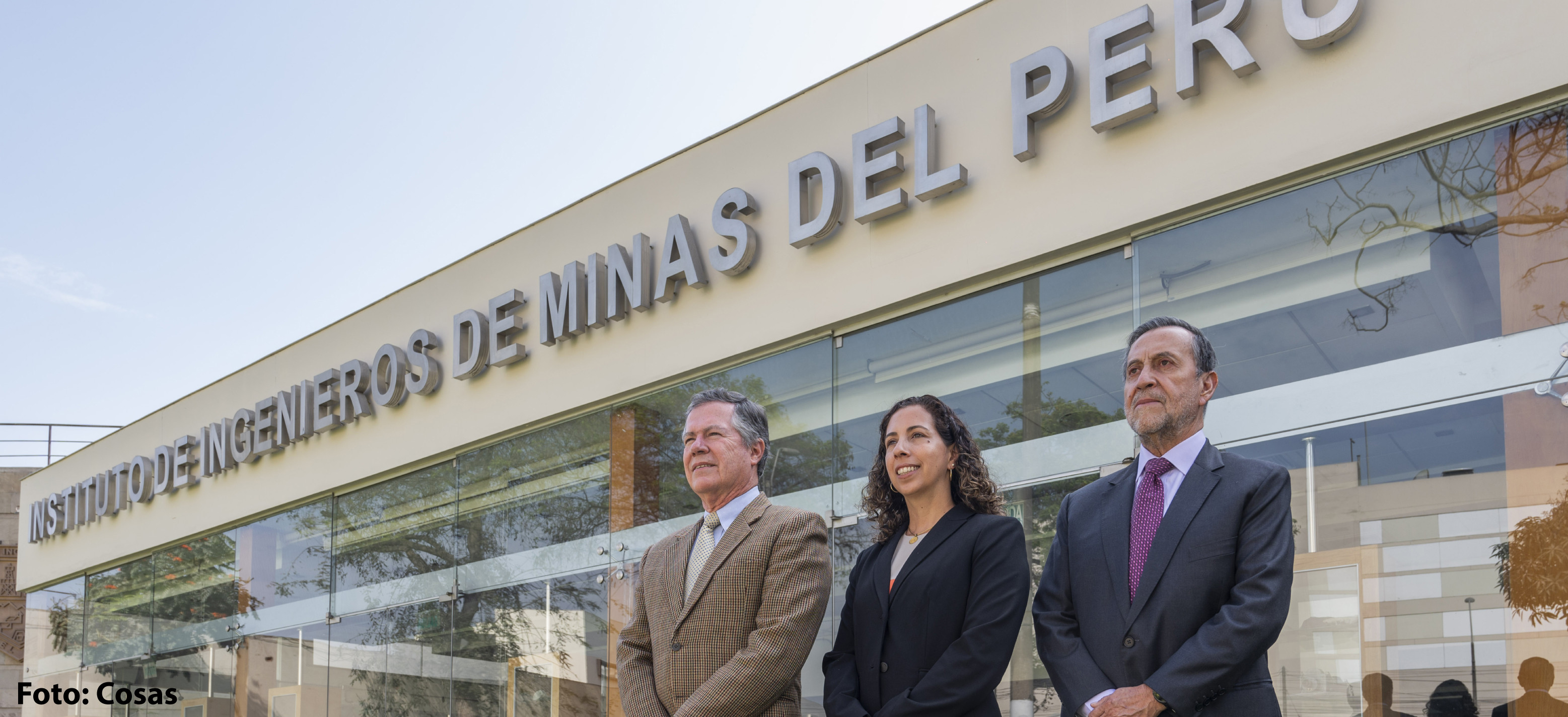Lima, NOVEMBER 7 2023 Leaders of the Sector Say, “We Have 46 Mining Projects on Hold. That Represents an Investment of $53 Billion”

Miguel Cardozo, president of PERUMIN 36; Jimena Sologuren, president of PERUMIN 37; and Carlos Diez Canseco, general manager of the Peruvian Institute of Mining Engineers, took stock of, and gave their outlook on, the leading mining convention in Latin America and the world. They also highlighted the urgency of unlocking projects in the pipeline.
PERUMIN held its latest edition in Arequipa from September 25 to 29. The event, presided over by Miguel Cardozo, attracted more than 65,000 participants from 56 countries and 23 regions of Peru, seven ministers, including the Prime Minister, twelve regional governors and ambassadors from major mining countries around the world, such as Canada.
“PERUMIN wants to be the image of Peruvian mining and is already on the global mining calendar," said Carlos Diez Canseco, the general manager of the Peruvian Institute of Mining Engineers (IIMP), the association organizing the Mining Convention.
In an interview with the magazine Cosas, Diez Canseco emphasized that "Peruvian mining operations have nothing to be jealous of when compared to other operations in in the world (...) They have not only high technological standards, but also social standards." For example, he mentioned that the Quellaveco mining operation uses 100% renewable energy. Quellaveco is just the latest major mining operation to be launched in the country.
For this reason, Miguel Cardozo, president of PERUMIN 36, reflected on the blockage of mining projects in the pipeline. “We have forty-six projects halted, blocked,” he stated. “These projects represent a US$53 billion investment. However, the permitting process is very convoluted, and we are losing momentum.”
According to Cardozo, the slowdown began during the administration of Ollanta Humala, with the Conga case. Specifically, he said that Dr. Pulgar Vidal complicated things in the Ministry of the Environment, which has had consequences to this day. "There is a generation of anti-mining bureaucrats who have slowed down mining exploration, which means slowing down the future development of mining," he pointed out.
On the other hand, Jimena Sologuren, president of PERUMIN 37, highlighted the contradiction that Peru has a highly regulated formal mining sector and an almost unregulated informal mining sector.
"On the one hand, you have a responsible formal project with all the ISO numbers and all the global standards, and on the other hand, you have informal mining that operates under the radar. Where is the demand for environmental standards for informal mining, let alone illegal mining?" she asked.
Sologuren also pointed out that the development of mining exploration in the country is complicated because while the permit is being processed, the area has already been invaded. Although she acknowledged that the regular process of mining formalization is complicated, she firmly rejected temporary fast tracks, such as the Comprehensive Mining Formalization Registry (REINFO), as they do not achieve real results.
Therefore, Cardozo, Diez Canseco, and Sologuren agreed that the State should focus on supervising not only the formal mining industry but also the non-formal sector, where the situation is getting worse by the day and includes other illegal activities that harm society and the environment.
Seizing the High Demand for Copper
Currently, demand for copper is increasing due to the global energy transition. This factor, coupled with the rising cost of fuel and gas as a result of the Russia-Ukraine war, will further drive the use of electric power for vehicles. This is a great opportunity for Peru, the world's second-largest copper producer.
"We must catch the wave," said Sologuren. "We have no right to leave so much wealth lying around." And with the mining sector accounting for 10 percent of Peru's GDP, according to Diez Canseco, the benefits are undeniable.
Cardozo explained that by implementing the projects in the pipeline, the country could double its production and catch up with Chile. "We are already second with what we produce. Of the US$53 billion, 70% is copper," he added.
In the same vein, Sologuren said that PERUMIN 37 will aim to showcase the formal and responsible mining sector throughout Peru. It will bring to the table the most relevant issues for the development of the sector, helping us to make the most of the copper opportunity and work hand in hand with the State to promote territorial development for the benefit of the population. "We look forward to seeing you at PERUMIN 37 in 2025," she said, extending the invitation.







